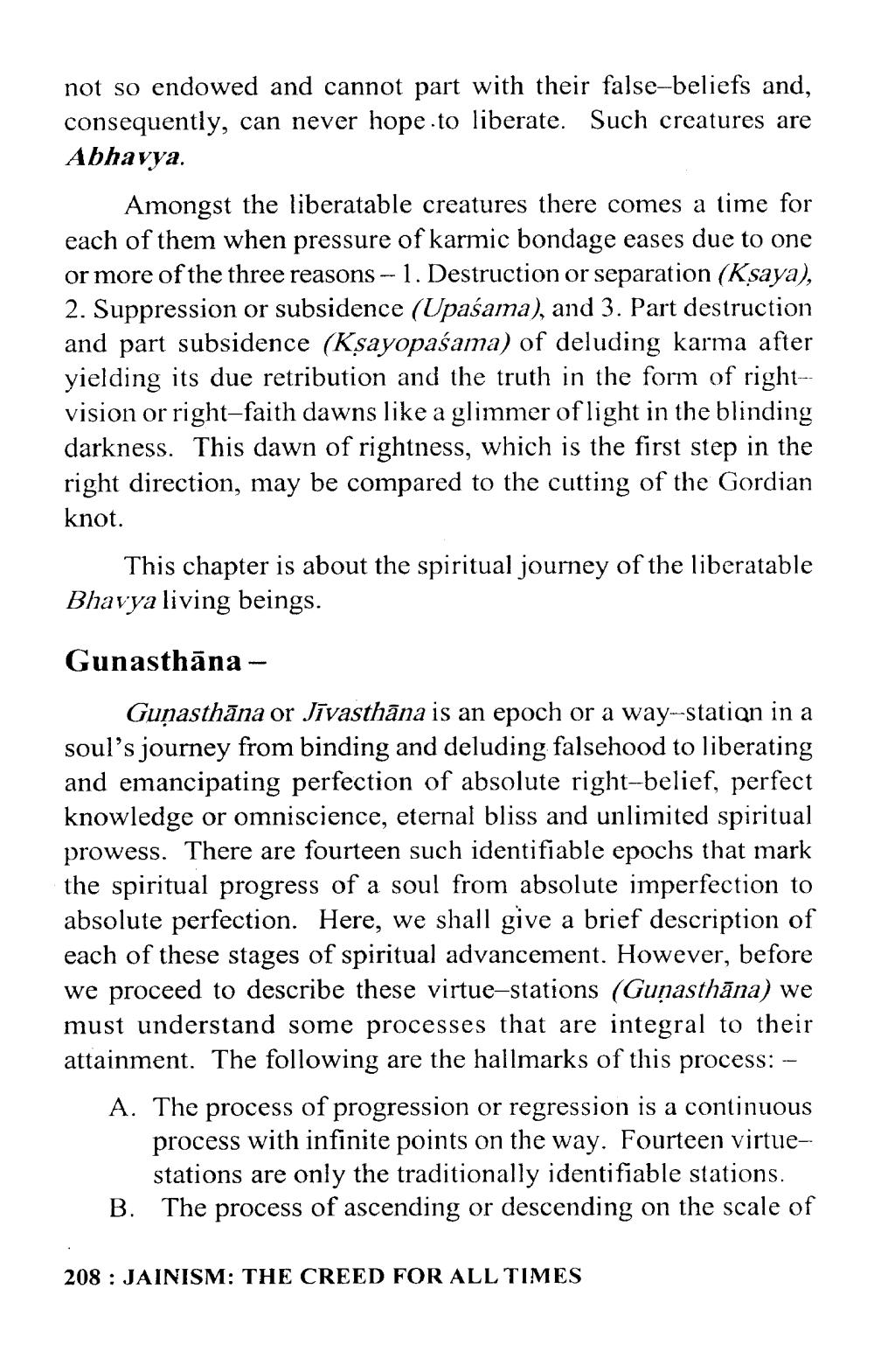________________
not so endowed and cannot part with their false-beliefs and, consequently, can never hope to liberate. Such creatures are Abhavya.
Amongst the liberatable creatures there comes a time for each of them when pressure of karmic bondage eases due to one or more of the three reasons - 1. Destruction or separation (Ksaya), 2. Suppression or subsidence (Upaśama), and 3. Part destruction and part subsidence (Ksayopaśama) of deluding karma after yielding its due retribution and the truth in the form of rightvision or right-faith dawns like a glimmer of light in the blinding darkness. This dawn of rightness, which is the first step in the right direction, may be compared to the cutting of the Gordian knot.
This chapter is about the spiritual journey of the liberatable Bhavya living beings.
Gunasthāna -
Gunasthāna or Jīvasthāna is an epoch or a way-station in a soul's journey from binding and deluding falsehood to liberating and emancipating perfection of absolute right-belief, perfect knowledge or omniscience, eternal bliss and unlimited spiritual prowess. There are fourteen such identifiable epochs that mark the spiritual progress of a soul from absolute imperfection to absolute perfection. Here, we shall give a brief description of each of these stages of spiritual advancement. However, before we proceed to describe these virtue-stations (Gunasthāna) we must understand some processes that are integral to their attainment. The following are the hallmarks of this process: - A. The process of progression or regression is a continuous
process with infinite points on the way. Fourteen virtue
stations are only the traditionally identifiable stations. B. The process of ascending or descending on the scale of
208 : JAINISM: THE CREED FOR ALL TIMES




